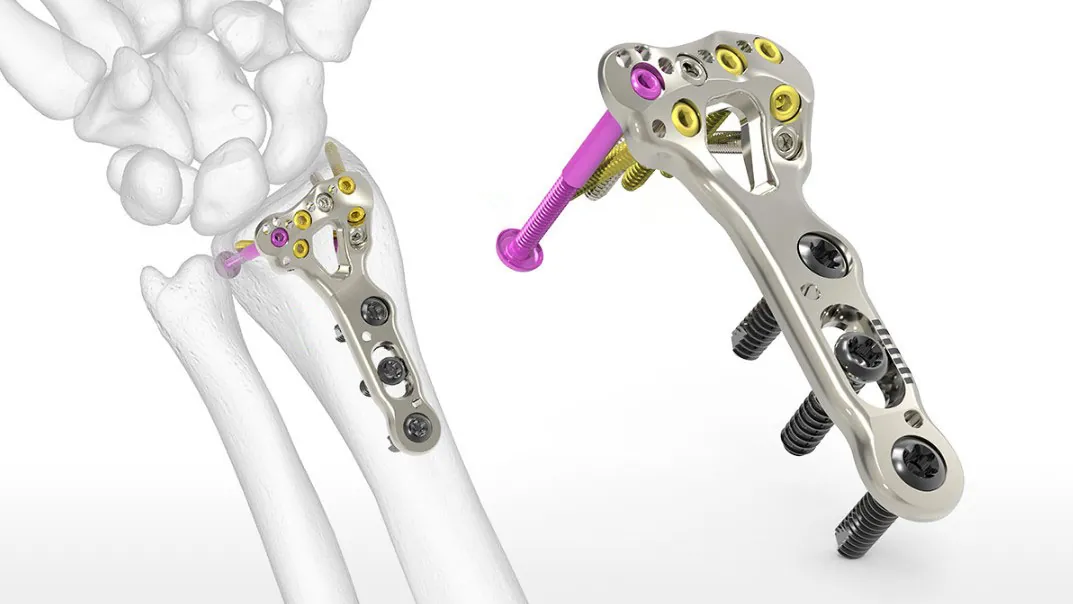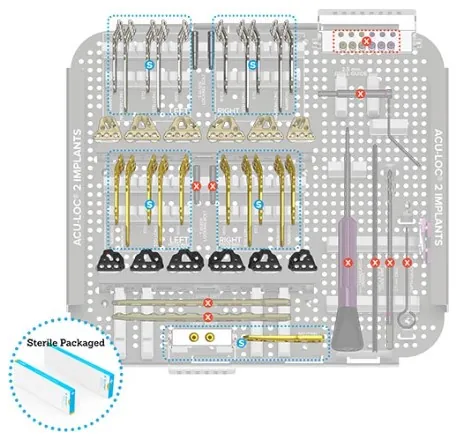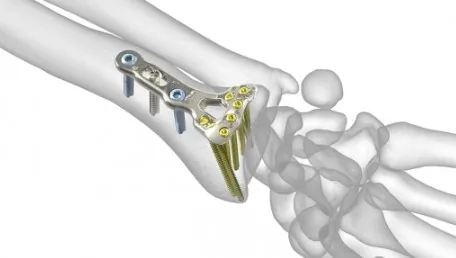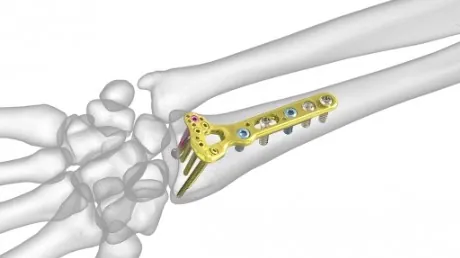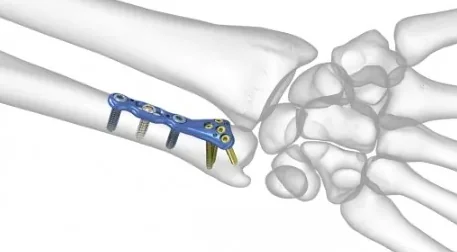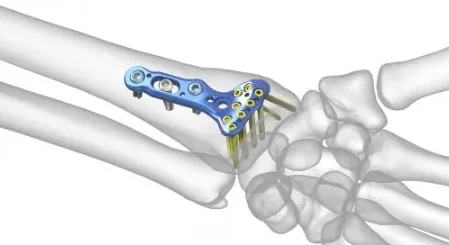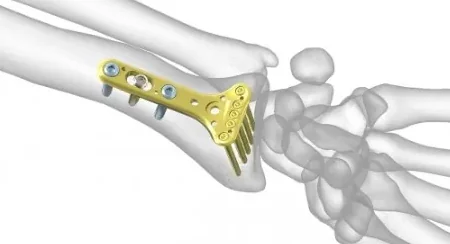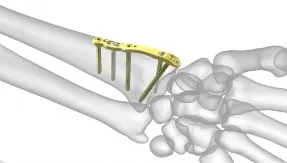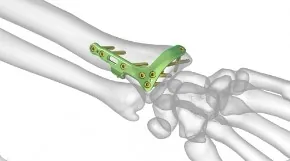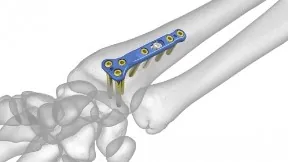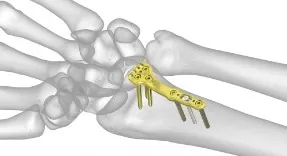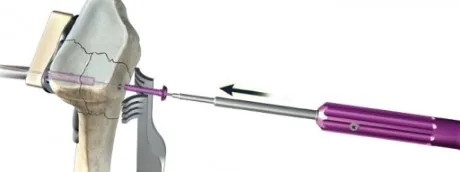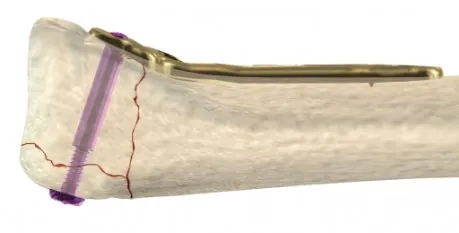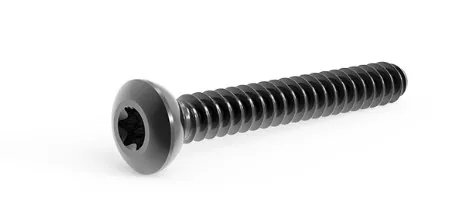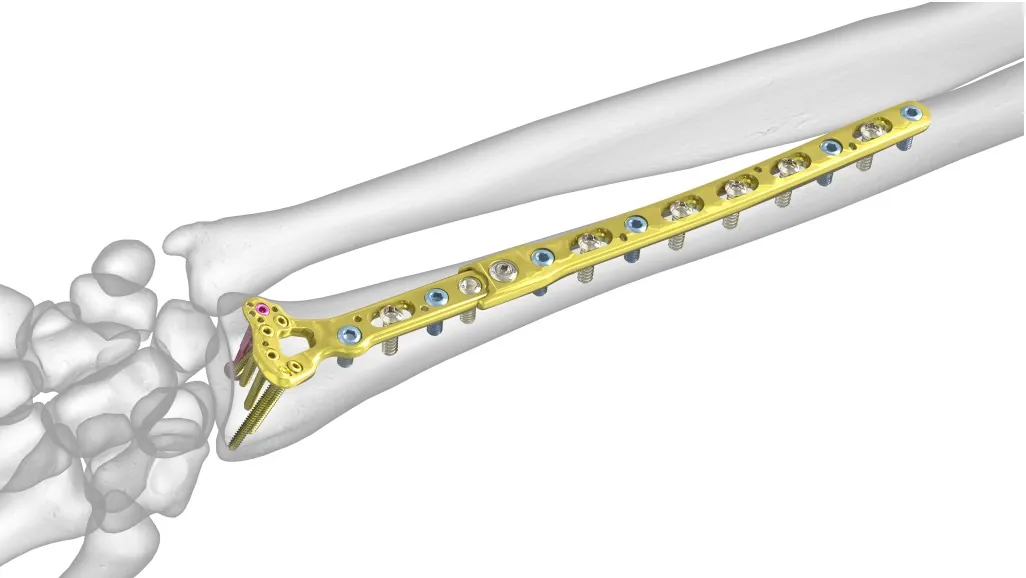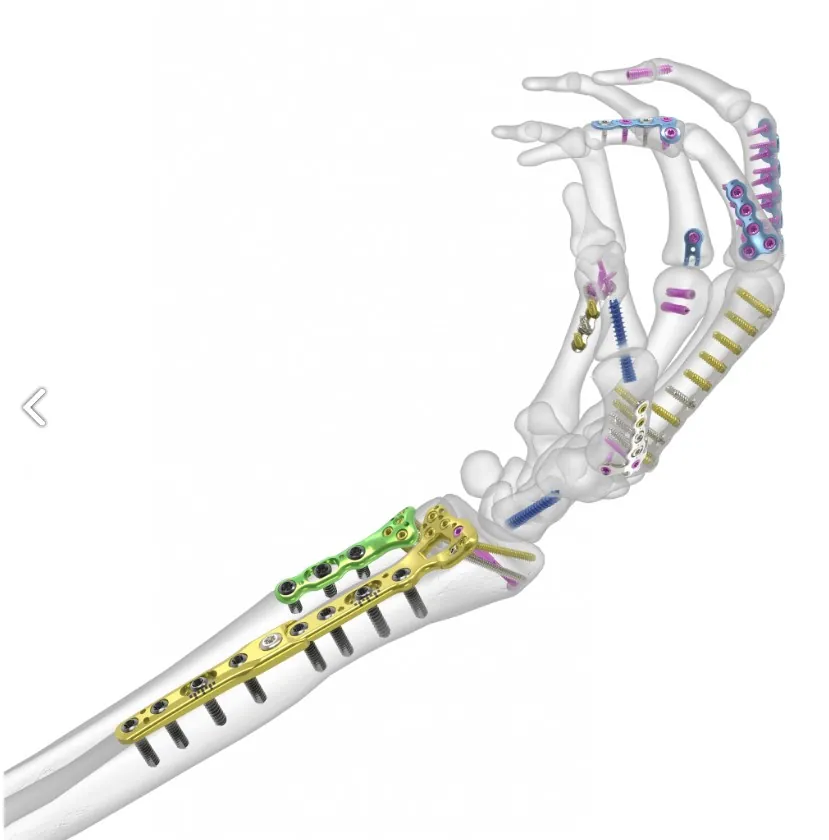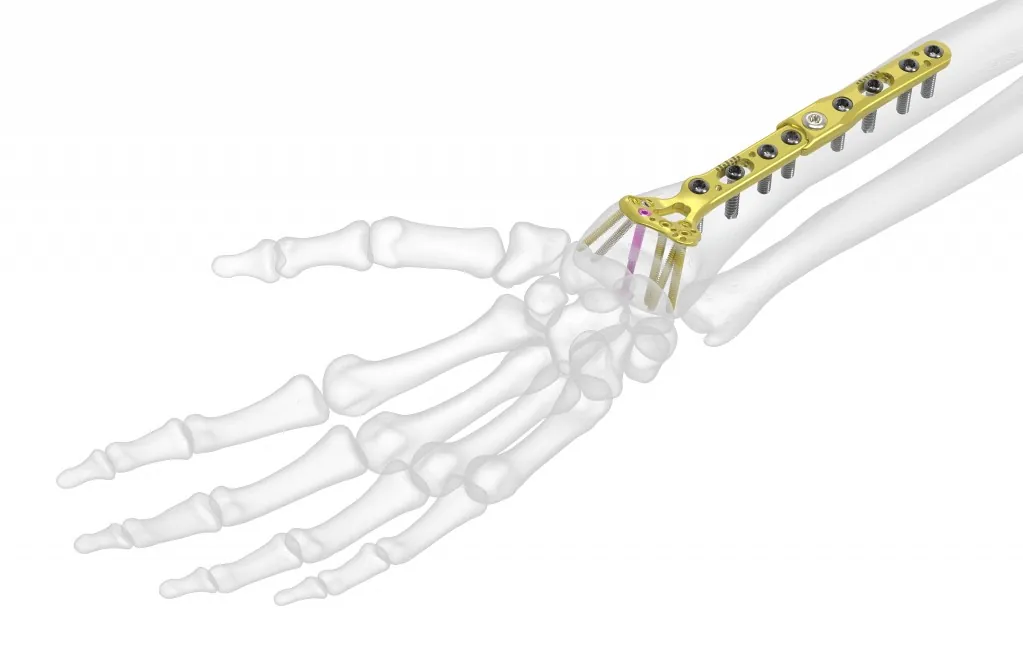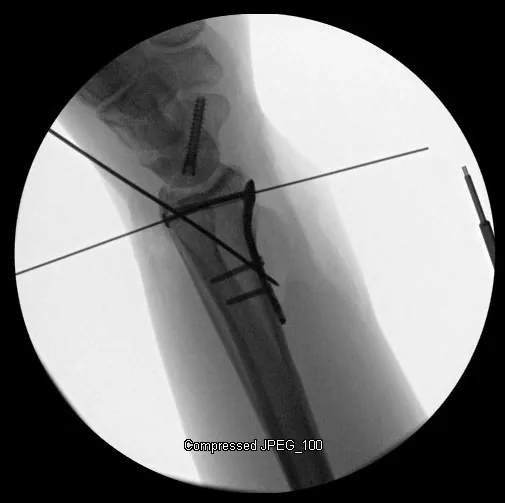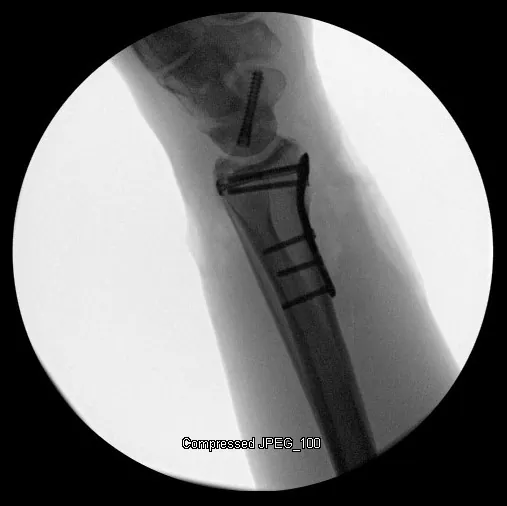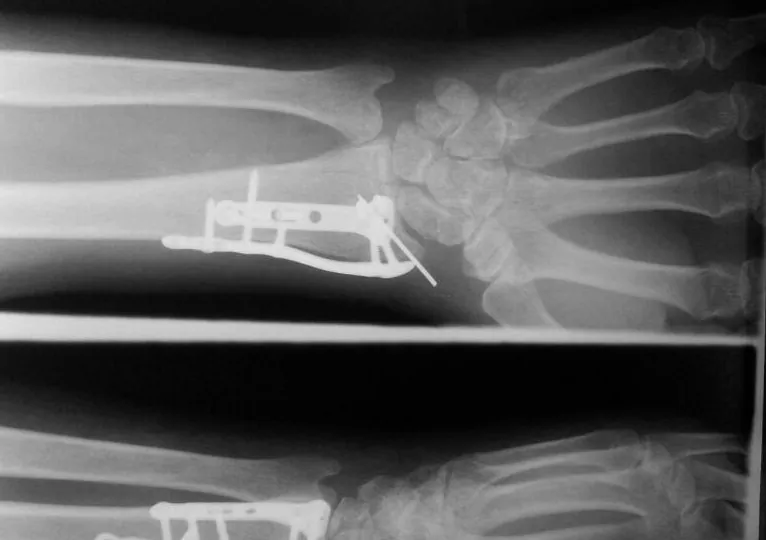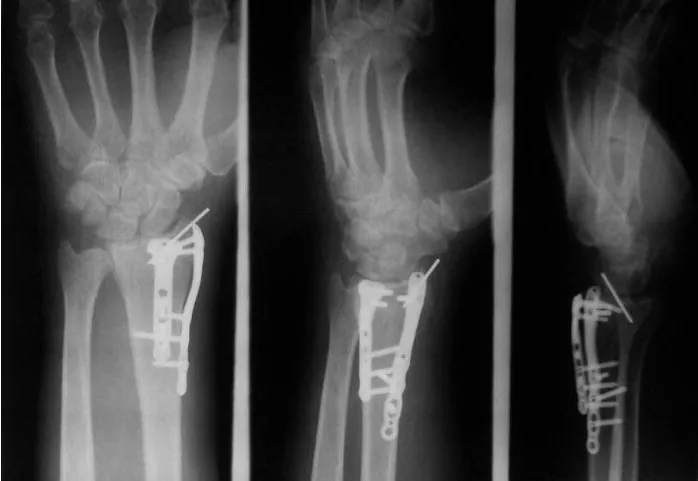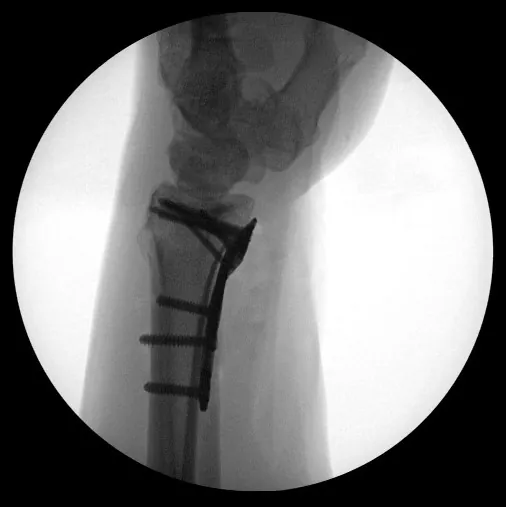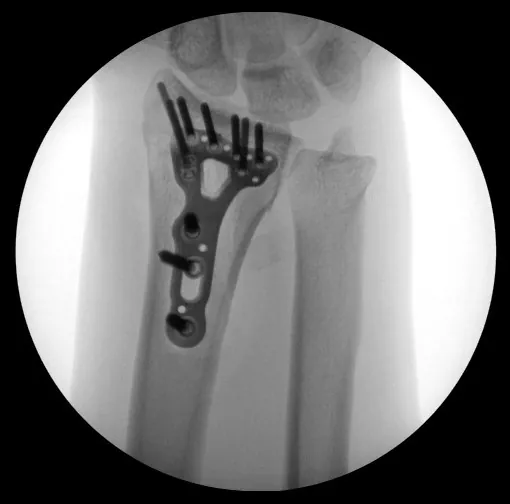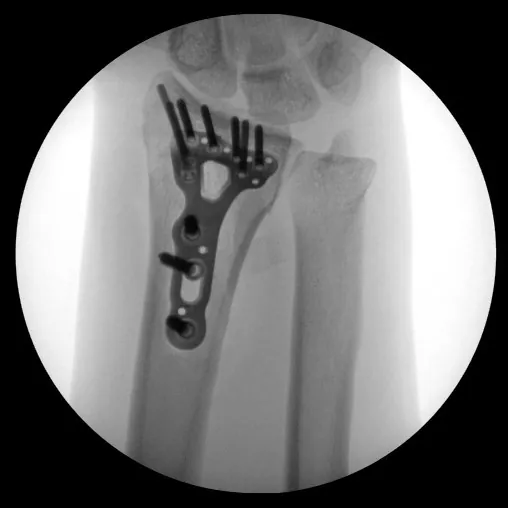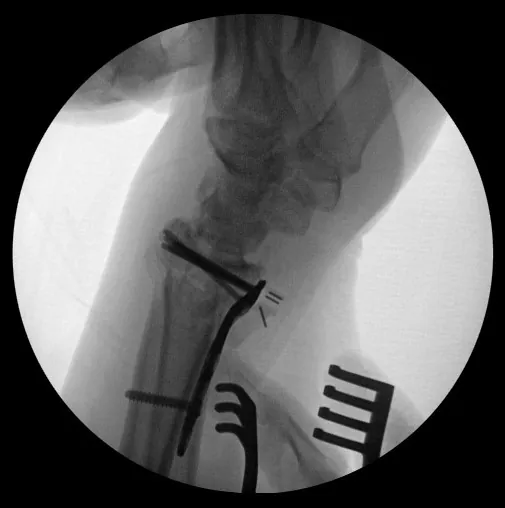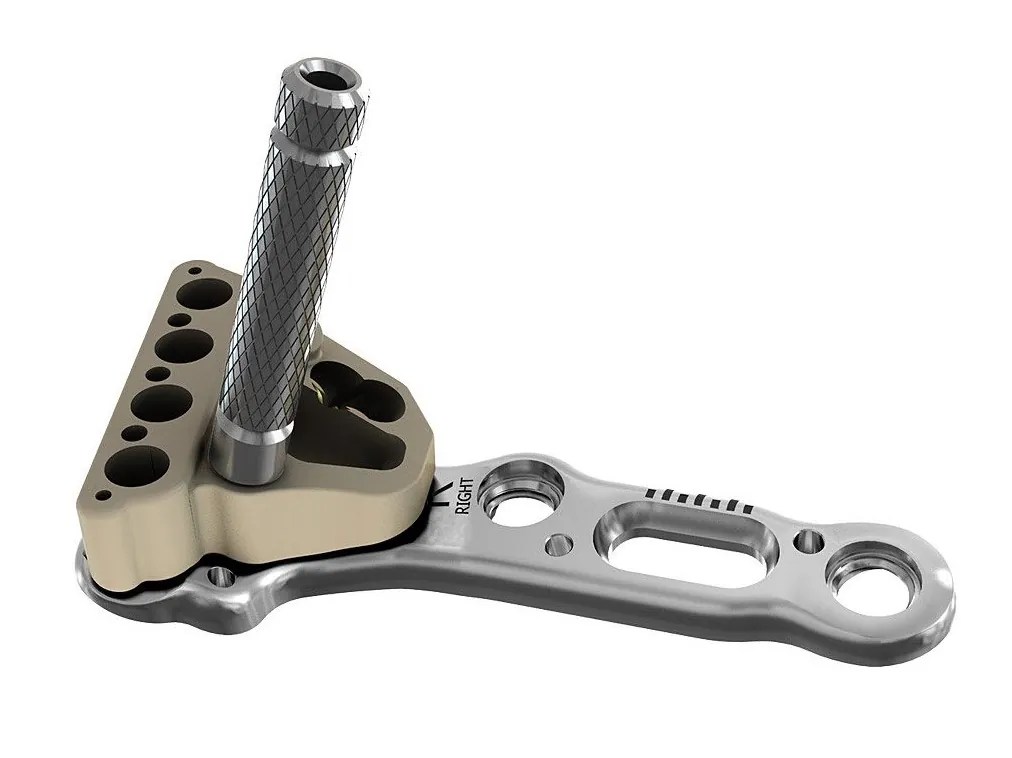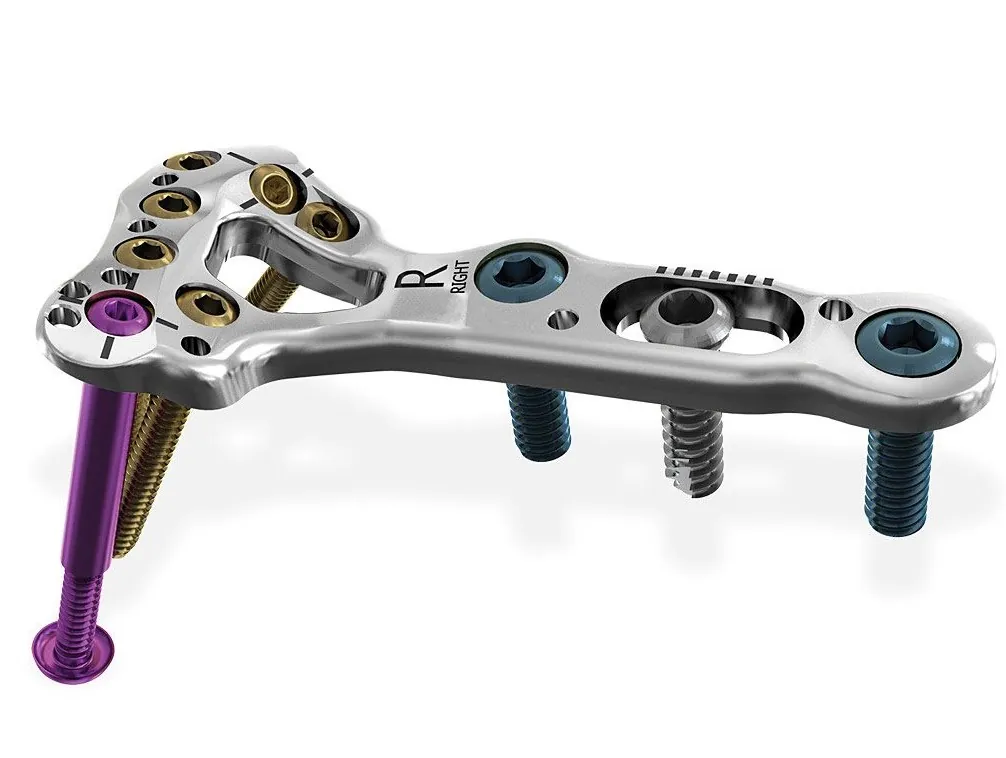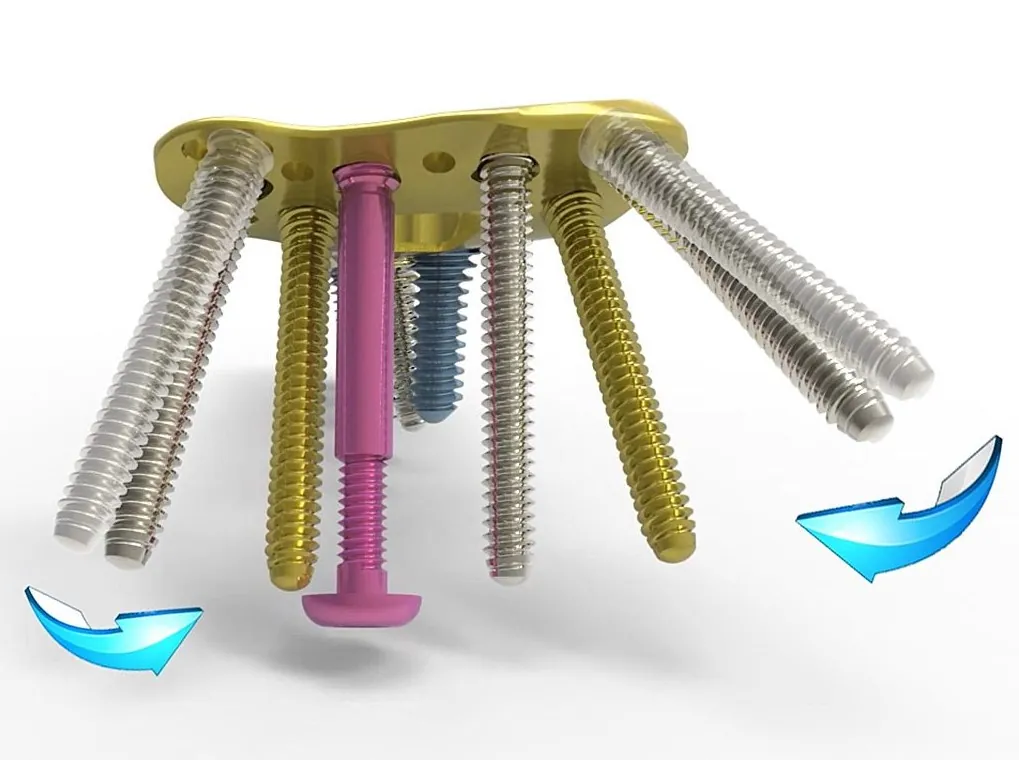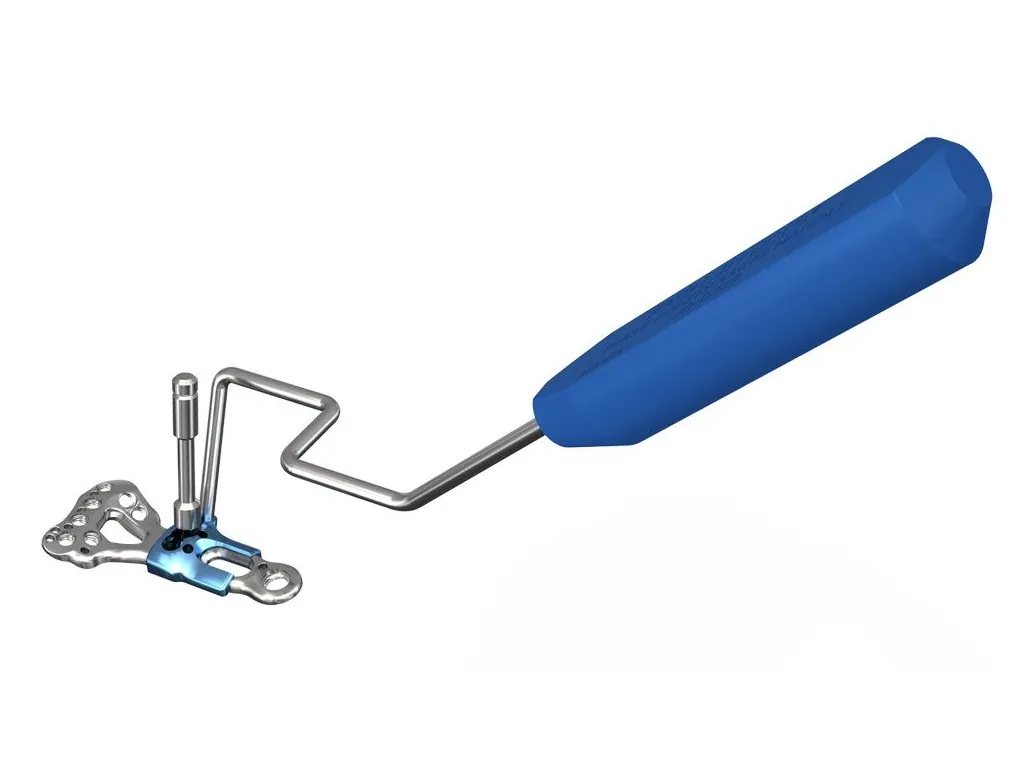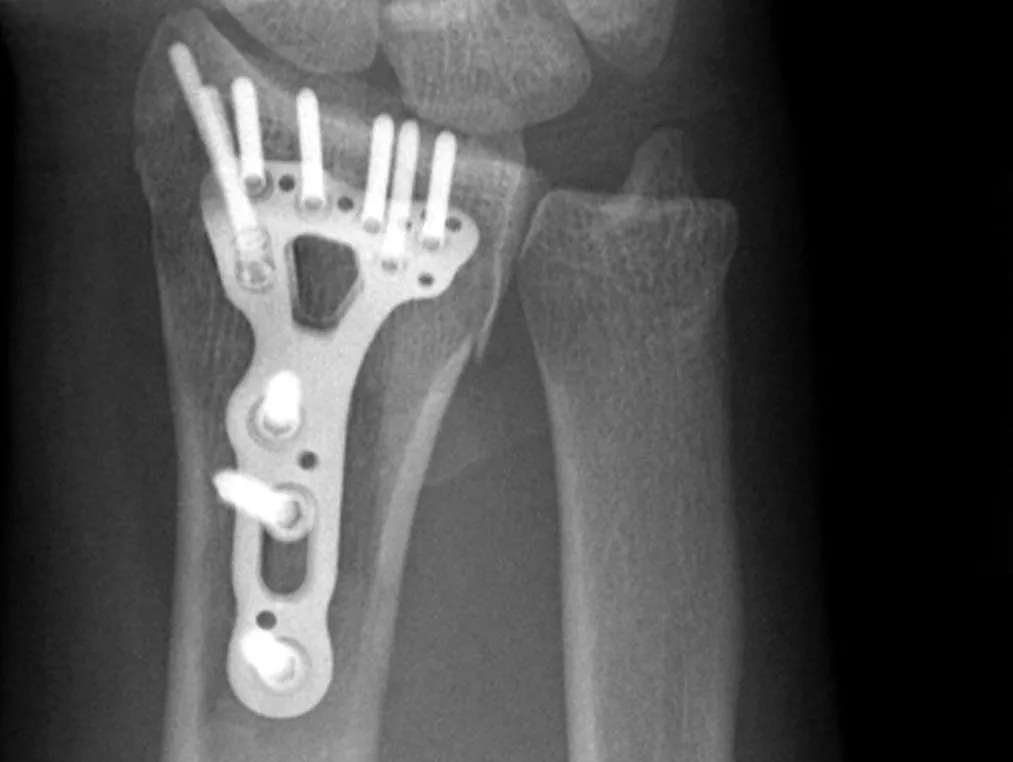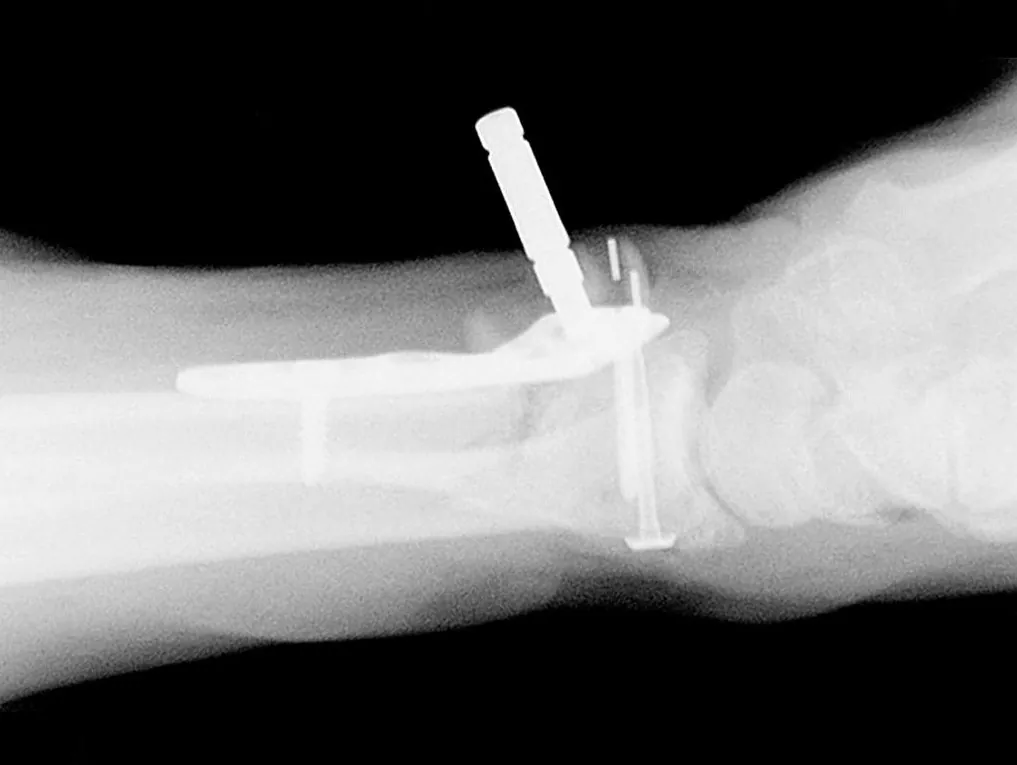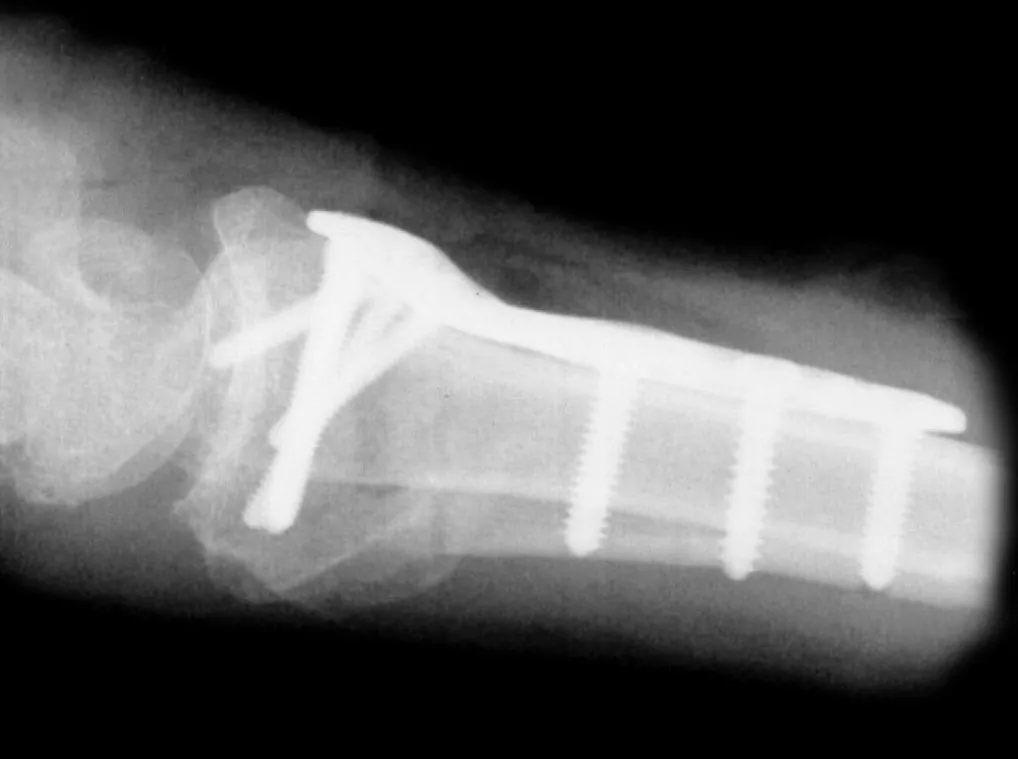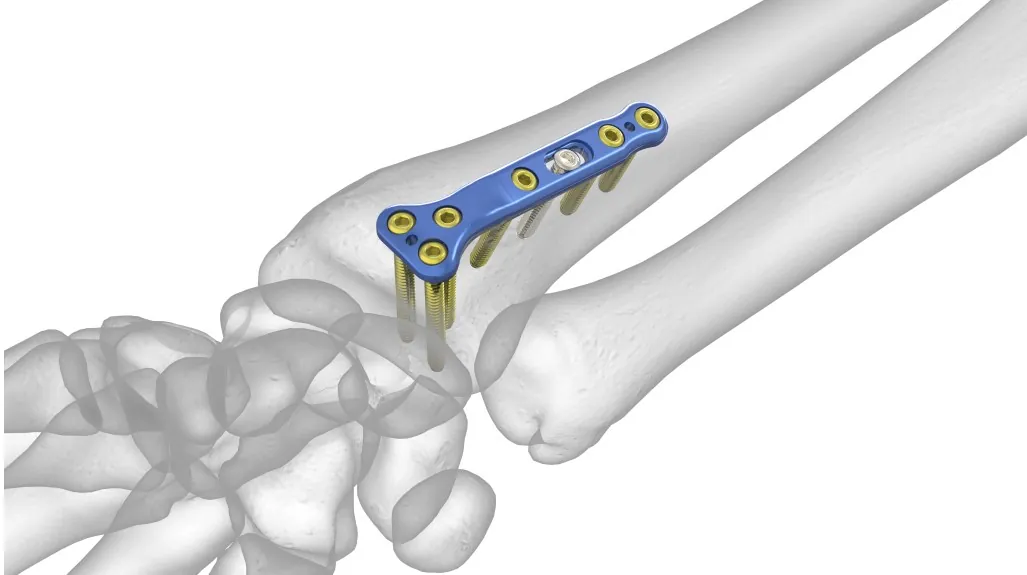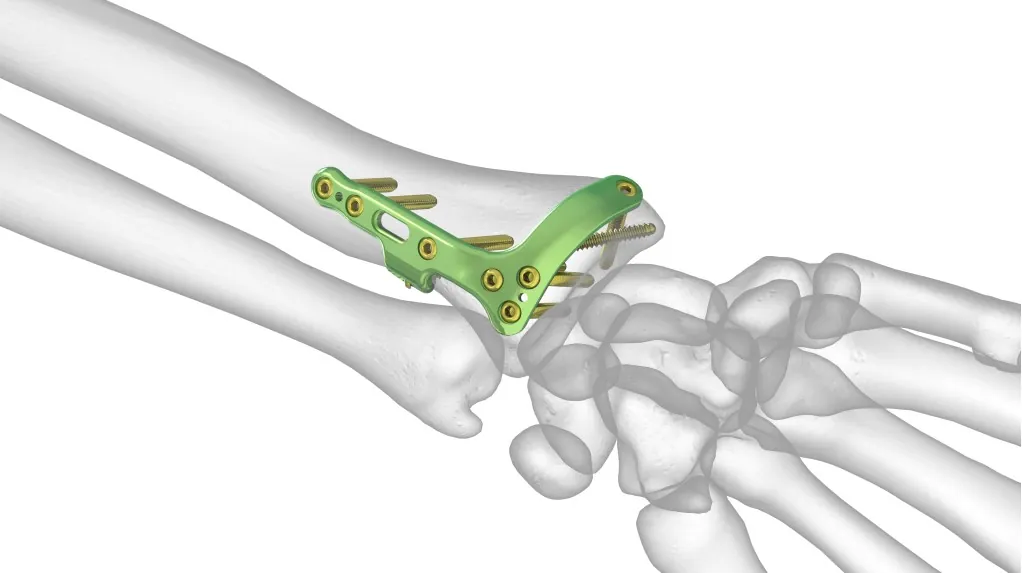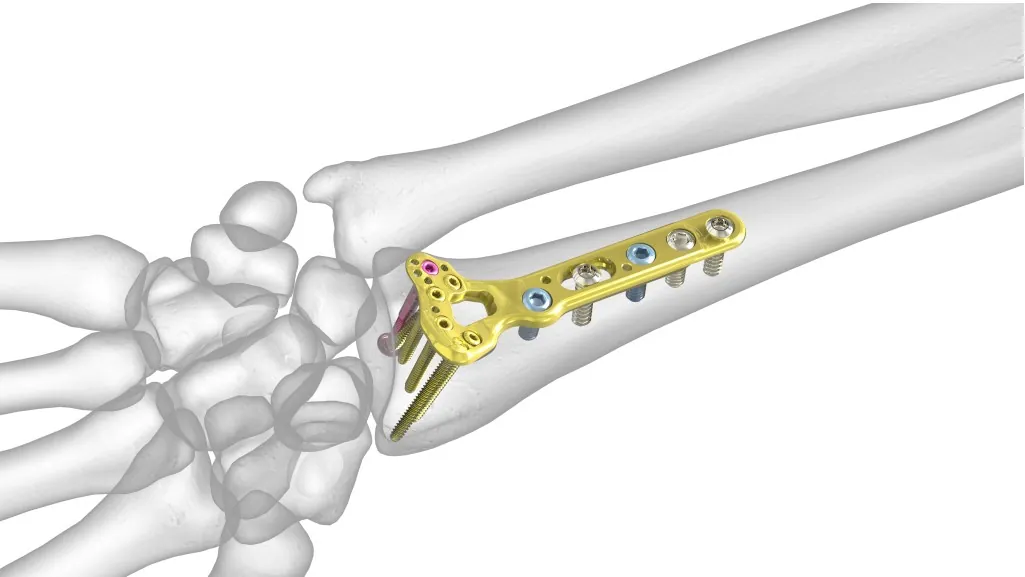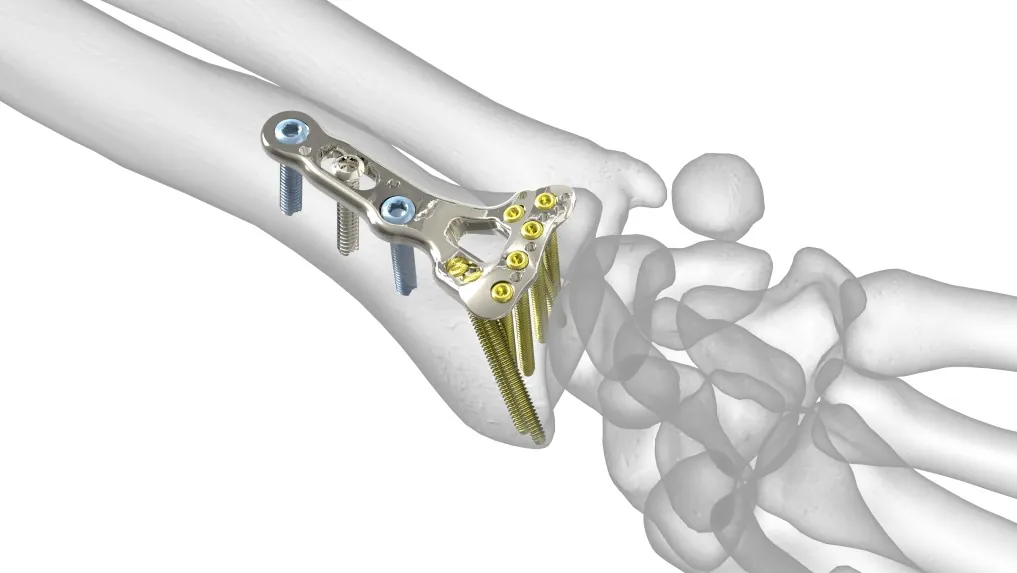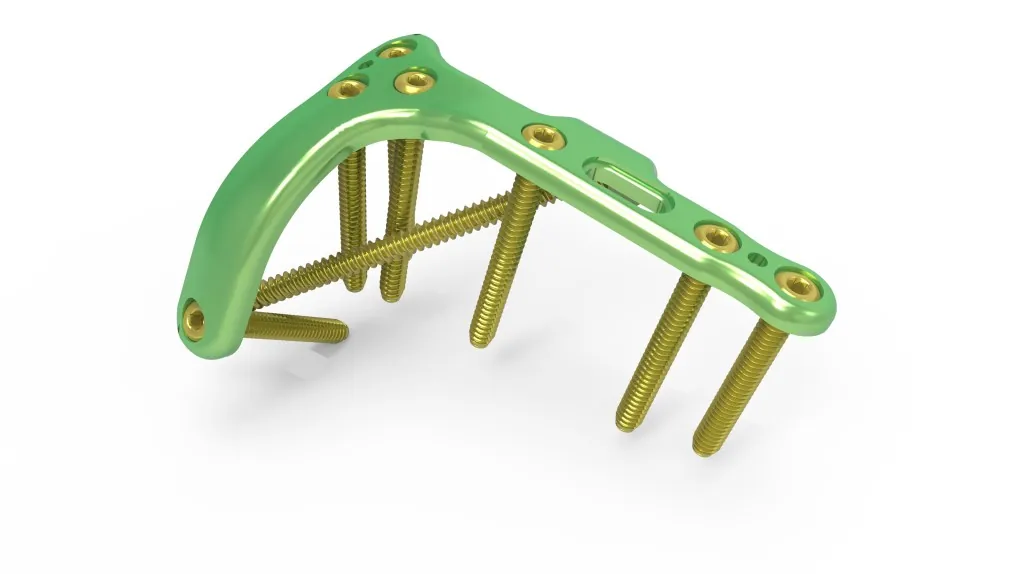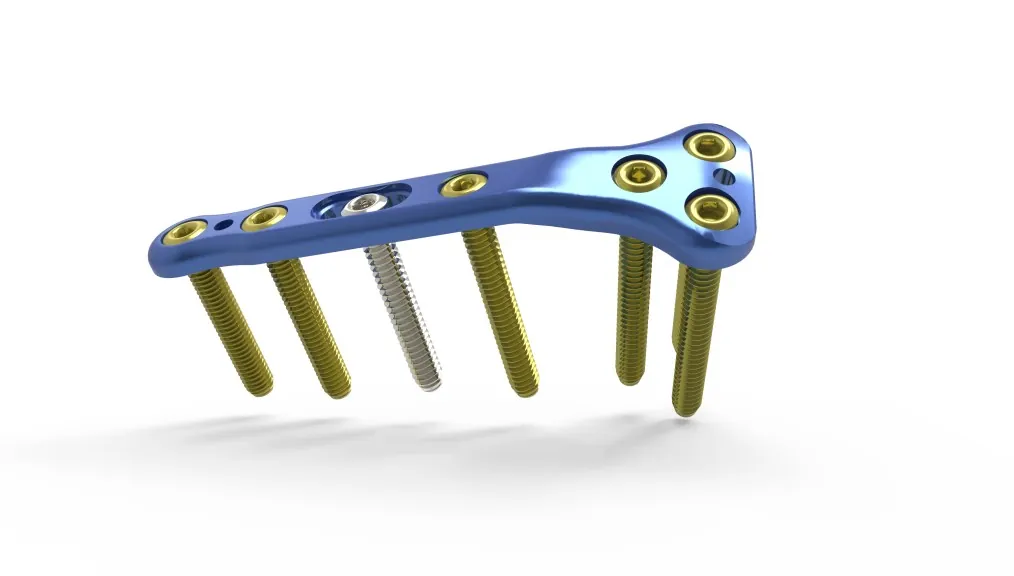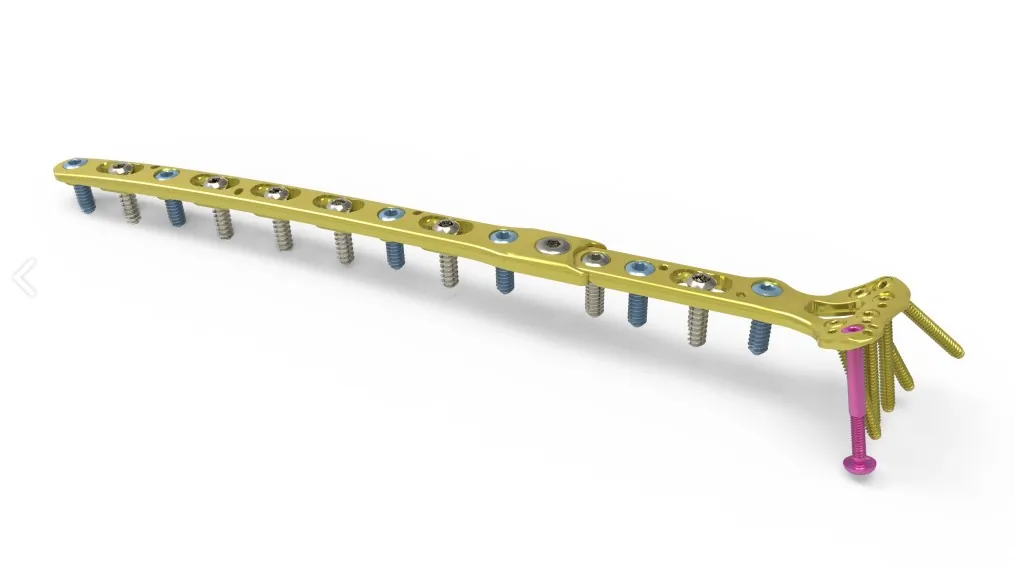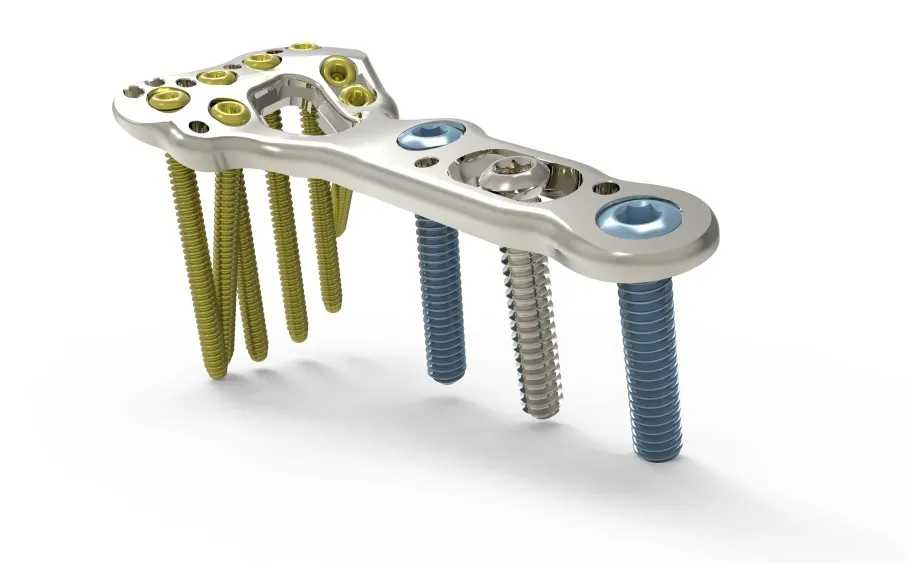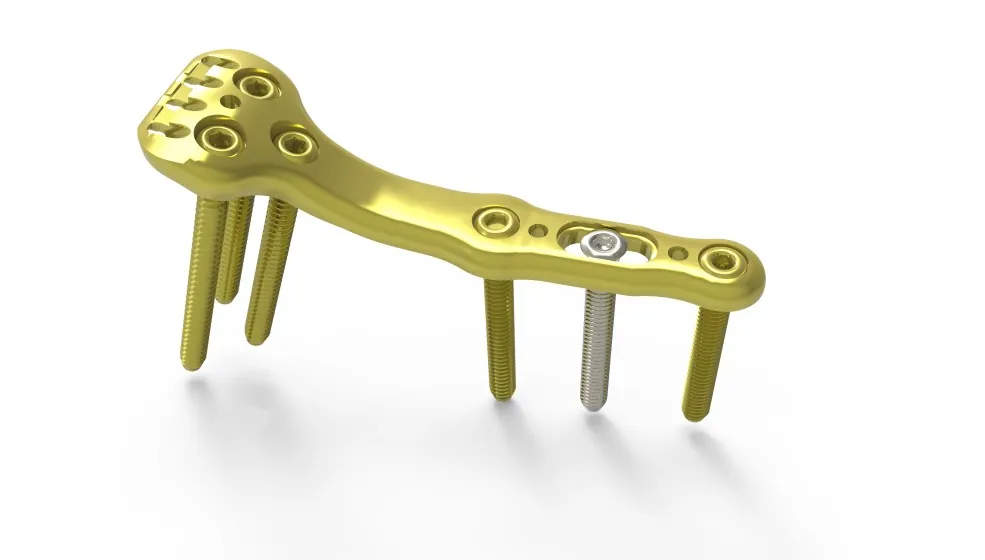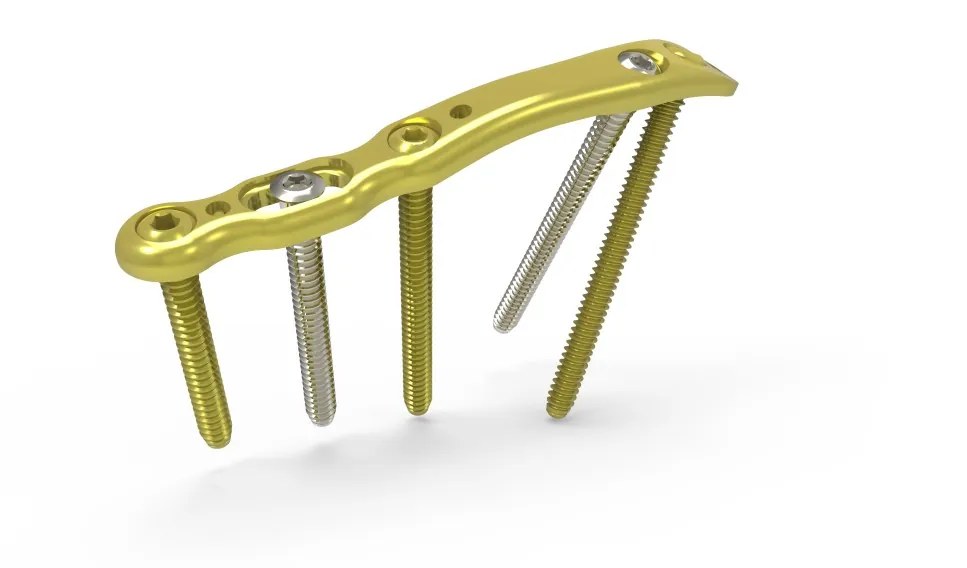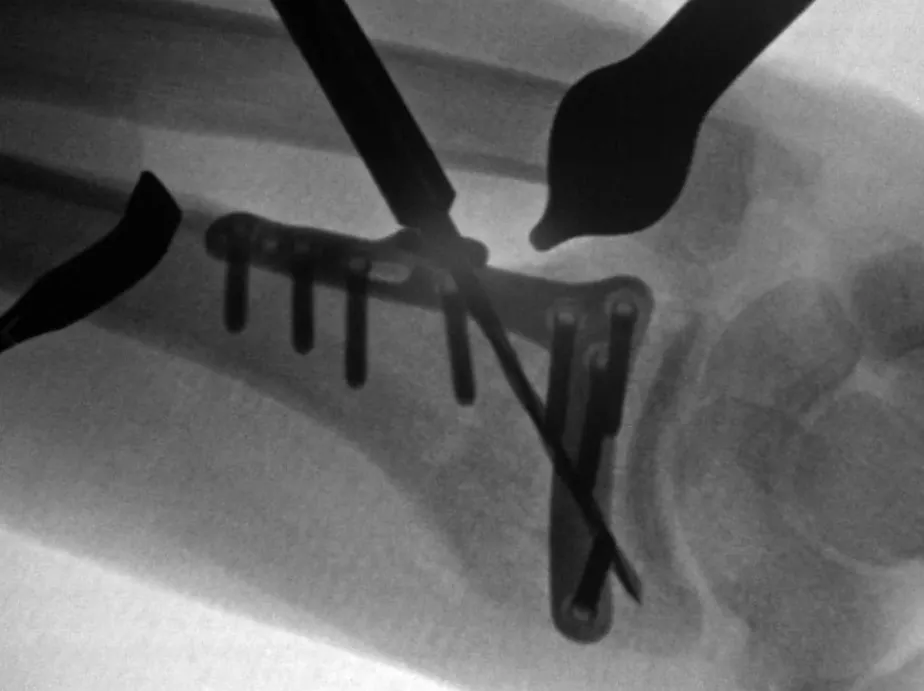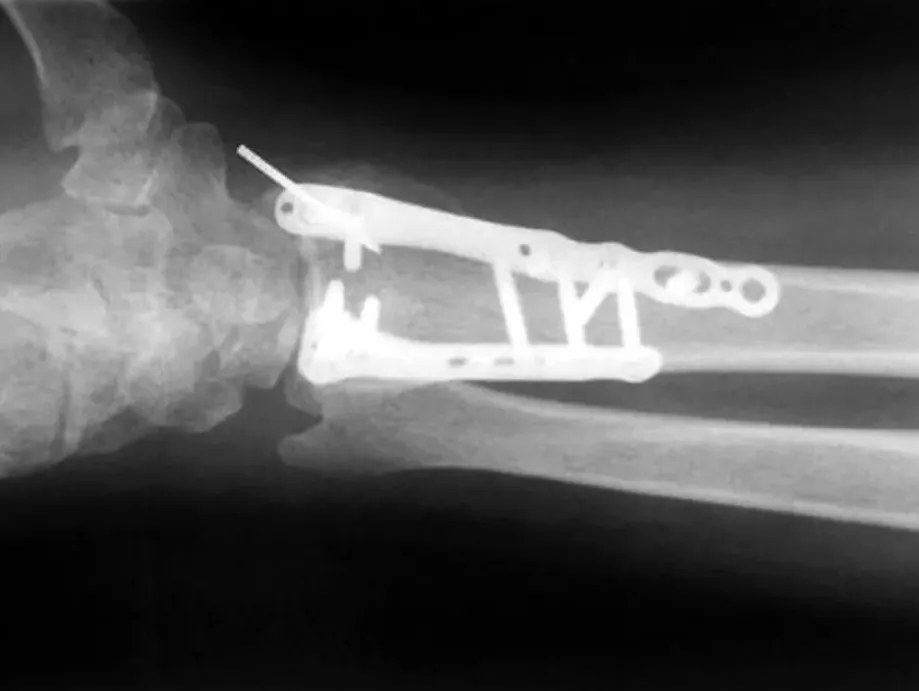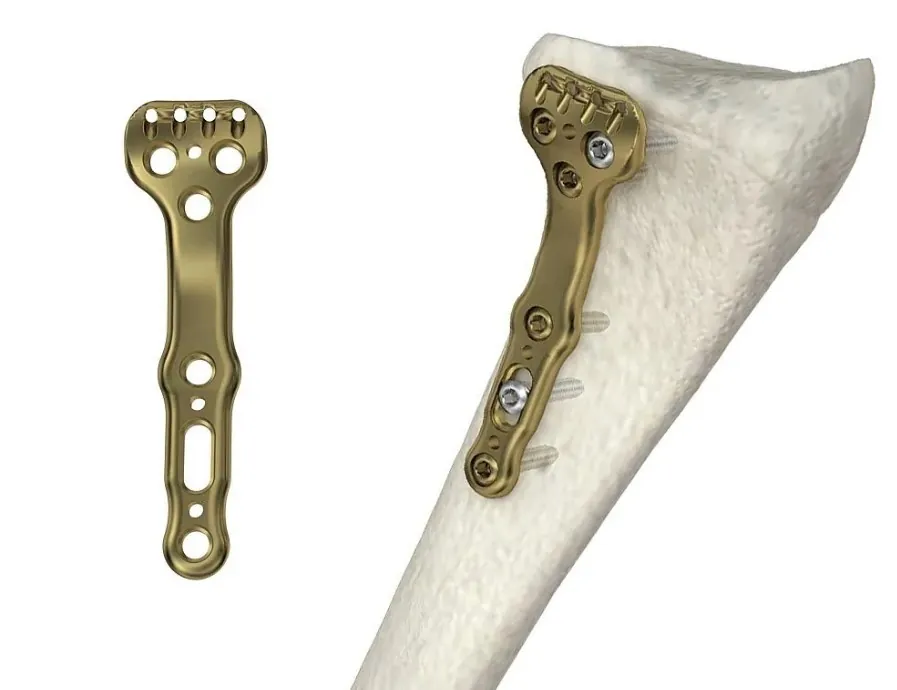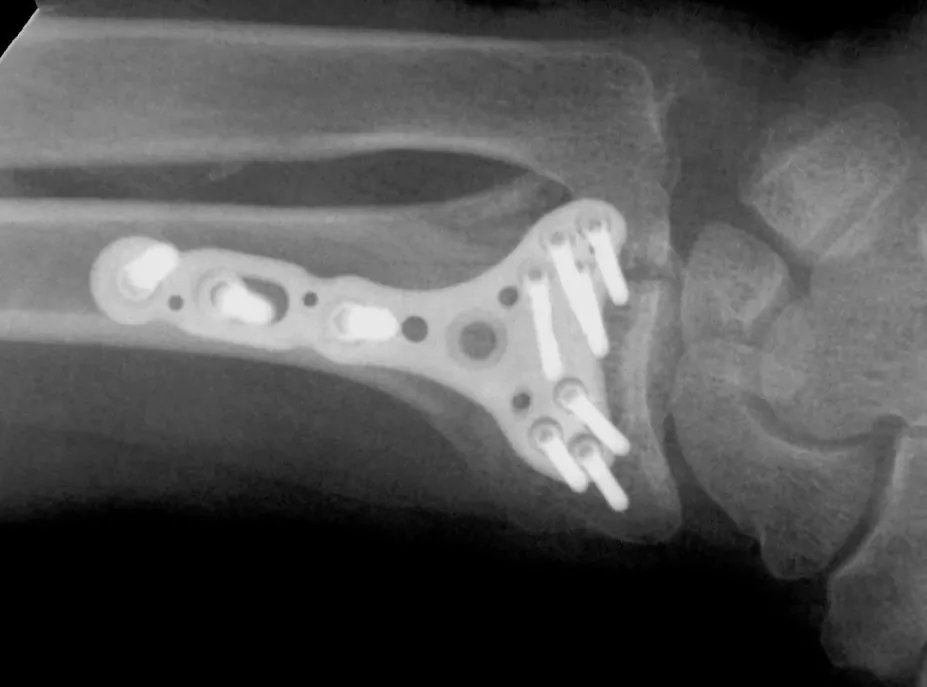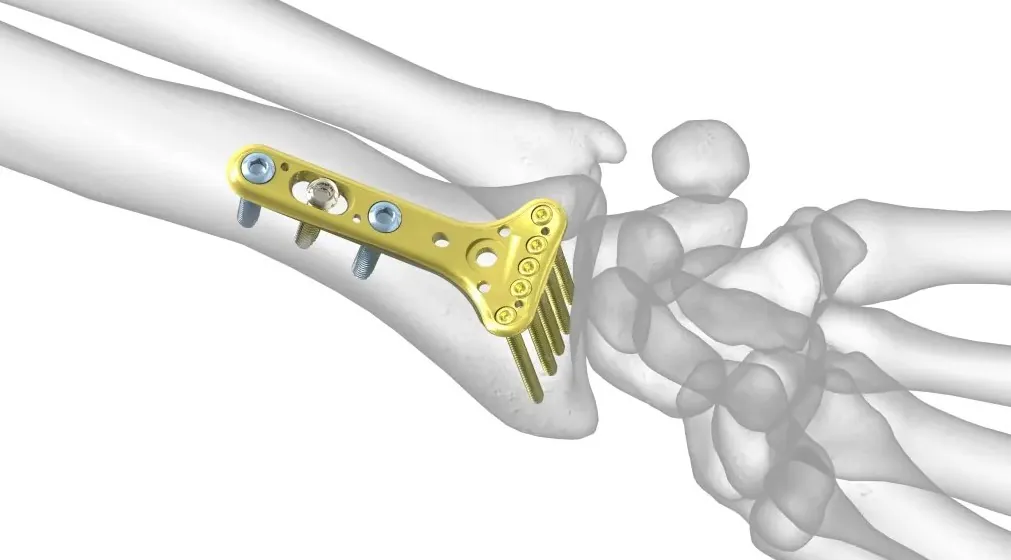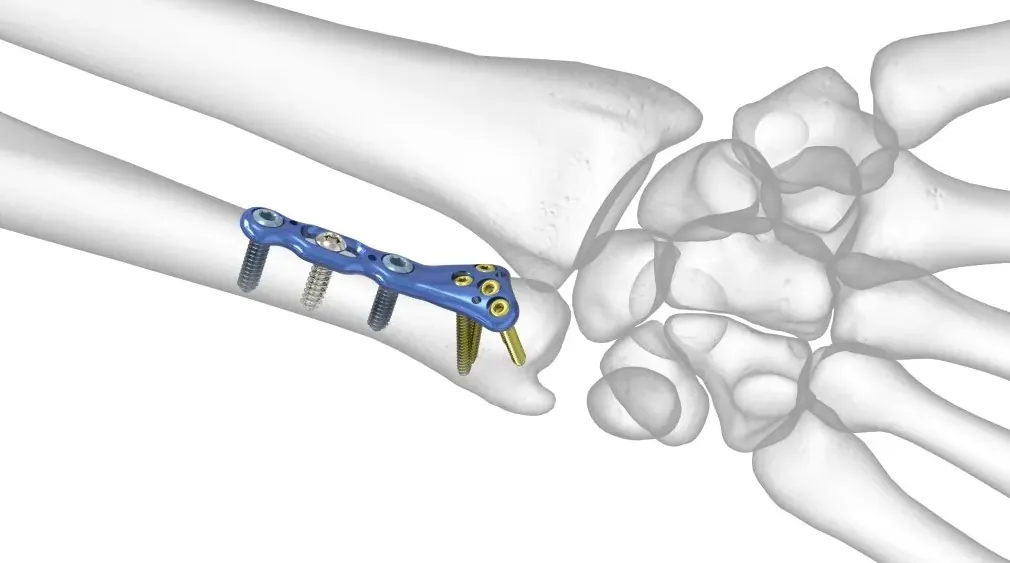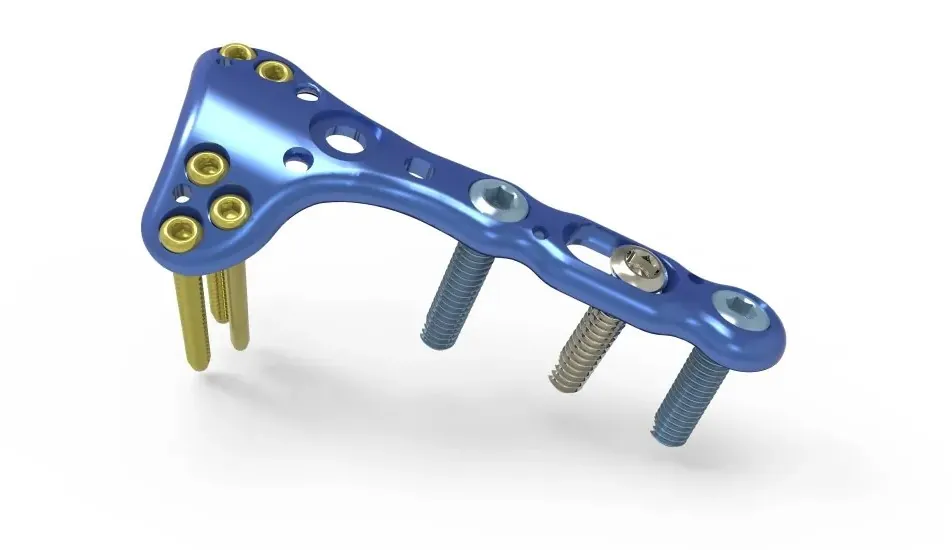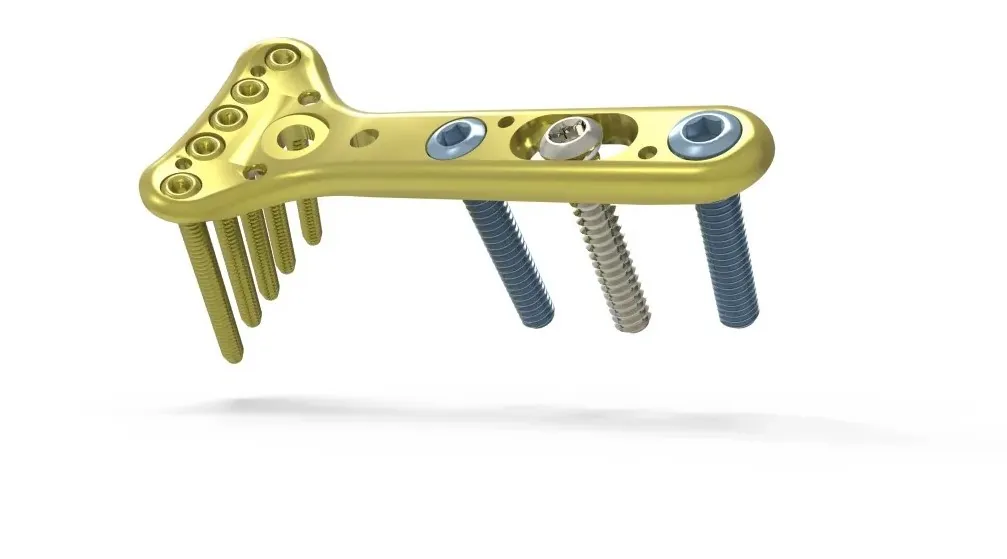Acu-Loc 2 Wrist Plating System Surgical Technique
Hand & Wrist Acu-Loc 2 Wrist Plating System Acumed Distal Radius Fracture Plating Solutions Fixation Products
SURGICAL TECHNIQUE
BROCHURE
Acu-Loc 2 Wrist Plating System Brochure
Acu-Loc 2 Wrist Plating System with 2.7 mm Low-Profile Hexalobe Screws Overview
The Acumed Acu-Loc 2 Plating System is a next-generation solution in plating fixation that focuses on complete implant options and a streamlined surgical process. The addition of 2.7 mm Low-Profile screws provides more options for proximal shaft screws to accommodate varying patient anatomy.
Acu-Loc 2 Volar Distal Ulna Plate Surgical Technique Overview Animation
The Volar Distal Ulna Plate was designed for fractures involving the ulnar head, ulnar neck, and fractures of the distal ulna. Usually, these injuries are associated with fractures of the distal radius. In this animation, the surgical steps for installation of a volar distal ulna plate are overviewed incorporating the 2.7 mm Low-Profile Hexalobe Screw.
Acu-Loc 2 Wrist Plating System
Product Overview
The Acumed Acu-Loc 2 Plating System is a next-generation solution in plating fixation that focuses on complete implant options and a streamlined surgical process.
This comprehensive system includes several plate families to give surgeons the freedom to choose between distal or proximal sitting plates, three different plate extension options and fragment specific plating options.
The system also includes instrumentation for plate placement and fracture management.
Flexible Configurations
Acumed offers over 24 validated Acu-Loc 2 Wrist Plating configurations to best support diverse market needs.
The most comprehensive, full configuration is available along with our most streamlined essential configuration in our small-footprint Acu-Loc 2 CORE tray.
Additional options are available. Contact us to find out which configuration may be right for you.
Features
Comprehensive Plating System
Standard, Variable Angle Locking, Fragment Specific and Extension Plates address a variety of fracture patterns.
Fracture Support
The distal screw row is designed for subchondral support, while the two styloid screws target the radial column. The ulnar corner of the plate offers suture holes for addressing small volar fragments.
Frag Loc® Technology
A patented, two-part cannulated compression screw is designed to compress dorsal fragments.
Instrumentation
Innovative instrumentation includes a targeting guide with radiopaque markings that allow visualization of anticipated screw trajectories. Kickstand posts are offered for distal first reduction and corrective osteotomy procedures.
Modular Extension Plate Attachments
Offer surgeons the option to extend any of the long and wide Volar Distal Radius Proximal Plates up to 176 mm.
Product Training Series: Acu-Loc 2 Wrist Plating System Key Features
The Acumed Acu-Loc 2 Plating System is a next-generation solution in plating fixation that focuses on complete implant options and a streamlined surgical process. Santana Galaviz, Senior Product Manager for the Hand and Wrist Portfolio, takes us through the system’s key features as highlighted in the Field Guide.
Acu-Loc 2 Volar Distal Radius Plate Surgical Technique Overview Animation
The standard Acu-Loc 2 Volar Distal Radius Plate is designed to closely replicate the anatomical contours of the distal radius and may assist in restoring the original geometry. In this animation, the surgical steps for installation of a standard volar distal radius plate are overviewed incorporating the 2.7 mm Low-Profile Hexalobe Screw.
Standard Volar Distal Radius Plates
Acumed Acu-Loc 2 Standard Volar Distal Radius Plates have an optimized design to closely replicate the anatomical contours of the distal radius and assist in restoring its natural geometry.
Other optimized features include a lower profile, polished finish which may help minimize soft tissue irritation, and converging ulnar screws, additional suture holes, and added K-wire holes for provisional fixation.
Proximal Volar Distal Radius (VDR) Plates
The Acumed Acu-Loc 2 Proximal Volar Distal Radius (VDR) Plates are designed for distal radius fracture and osteotomies, as well as segmented diaphyseal fractures. Customizable plate length and width options allow for sizing of varying patient anatomies.
In addition, converging ulnar screws, suture holes, and K-wire holes have been incorporated to support the volar ulnar lip and lunate facet. The 2.3 mm Variable Angle screws can also be used with this plate family.
Volar Distal Ulna (VDU) Plates
Acumed Acu-Loc Volar Distal Ulna (VDU) Plates are specifically designed for periarticular fractures of the distal ulna. The anatomic curvature of the left- and right-specific plates are intended to facilitate restoration of the bone’s natural geometry. In addition, plate positioning and converging screw angulation target distal fragments of the ulnar head and neck for more stable fracture fixation.
Dorsal Distal Radius Plate
Acumed Acu-Loc Dorsal Plates are designed for complex distal radius fractures that need to be addressed from the dorsal side. The plates are anatomically contoured and may help restore the bone’s natural anatomy from the distal ulnar side to the radial styloid. In addition, the distal cage of screws – with fixed angle locking technology – are designed to help support the fracture.
Acu-Loc Extra-Articular (EX) Plate
The Acumed Acu-Loc Extra-Articular Plate is designed for extra-articular distal radius fractures and osteotomies. The plate sits more proximally than the standard Acu-Loc Volar Distal Radius Plate, and its distal locking screws are angled to support the dorsal lip of the radius, maximizing purchase in the subchondral bone. The 2.3 mm Variable Locking Screws can also be used in the distal holes of this plate family.
Distal Radius Fragment Specific (DRFS) Plates
Acumed Distal Radius Fragment Specific (DRFS) Plates are designed to independently address the fractures of the intermediate and radial columns. The modular nature of the plates, which include the Dorsal Rim Buttress Plate, Dorsal Lunate Plate, Volar Lunate Suture Plate, and Divergent Radial Styloid Plate, allows compression of fracture fragments from multiple directions.
The Divergent Radial Styloid Plate
The Divergent Radial Styloid Plate buttresses the radial column. Targeted distal screw placement is designed to provide subchondral bone support, with one screw targeting the dorsal rim of the sigmoid notch and the other targeting the volar rim. In addition, fixed-angle screw trajectories are designed to avoid the sigmoid fossa, minimizing penetration of the distal radioulnar joint.
The Dorsal Rim Buttress Plate, designed for distal radius fractures, is positioned on the dorsal ulnar side of the radius. The plate extends radially to support dorsal lip comminution and buttress dorsal fragments. Three screws are designed to target the subchondral bone and support the lunate facet, while a screw can be inserted ulnar-to-radial for further radial styloid support.
The Dorsal Lunate Plate is designed to provide support to fracture patterns that involve the dorsal lunate facet of the distal radius and the sigmoid notch. The Dorsal Lunate Plate can be inserted through a smaller incision than a standard dorsal approach. For added stability, three plate screws are designed to target the subchondral bone and support the lunate facet.
The Volar Lunate Suture Plate supports the volar ulnar corner of the distal radius. Built-in suture holes allow for sutures to be used with the plate to capture small articular fragments. Distal plate placement may maximize volar ulnar lip support, while three screws target the subchondral bone to support the lunate facet.
Extension Plates
Acumed Acu-Loc 2 Extension Plates are designed to lock to Acu-Loc 2 Proximal VDR Plates to provide rigid fixation of segmental fractures of the distal radius that extend into the diaphyseal region. The proximal plate end is tapered and the undersurface is designed for limited contact with the bone.
Frag-Loc Compression Screw
The Frag-Loc Compression Screw is a two-part cannulated compression screw for dorsal comminution that gives surgeons the option for steadfast dorsal compression through a small dorsal incision. In addition, the undersurface geometry of the screw head allows for sub-osseous purchase into the dorsal fragment while designed for minimizing hardware prominence.
Variable Angle Locking Screws
Acumed Variable Angle Locking Screws can aid in the capture of specific fragments or accommodate variations in patient anatomy. They can be used in any distal hole of any of the gold colored Acu-Loc 2 Proximal VDR Plates or Acu-Loc Extra Articular Plates. The screws allow for a total variance of 5 mm or 15 degrees.
2.7 mm Low-Profile Hexalobe Screws
Single Drill for Surgical Efficiency: When plating the distal radius and ulna, the 2.7 mm Low-Profile Hexalobe Screw and the 2.3 mm screws that are used for fixation both use the 2.0 mm Quick-Release Drill.
Reduced insertion torque for easier advancement: 2.7 mm Low-Profile Hexalobe Screws have a 58.5% reduction in insertion torque compared to 2.7 mm Hexalobe Screws.*
Tailored to your patient’s needs: A smaller diameter screw is designed to address fractures in smaller bones or smaller-stature patients.
*Data on file with Acumed
Image Gallery
Info Contact
| HEAD | OFFICE |
| Tel | +27 (11) 966 0600 |
| info@medhold.co.za | |
| Address | MSI Business Park, 68 Rigger Road, Spartan, Kempton Park, Gauteng, 1619 |

